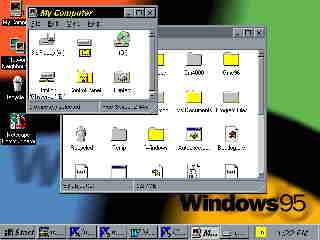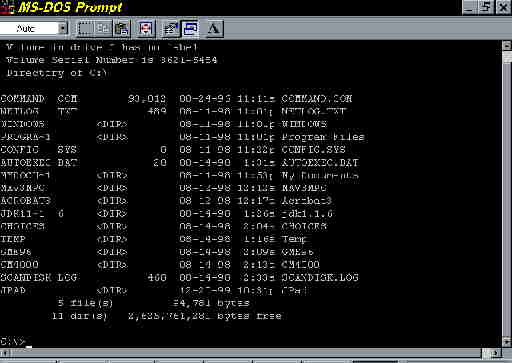
Operating systems can be loaded into memory from either floppy diskettes or hard disks. This process is what is known as booting. The word boot derives from the expression "to lift yourself up by your own bootstraps," which is essentially what a computer does when it is first turned on. In order to read from and write to a disk, the disk operating system (or DOS) must be in memory. However, the disk operating system itself is stored on disk. Therefore, it seems impossible for the computer to load its operating system into memory when it must have the operating system in memory in order to read from a disk. In actuality, the computer already has a small portion of its operating system built into its ROM (read only memory). This part of the operating system starts the process of reading the remainder of the operating system from the disk.
The first operating system developed for use with
microcomputers was Digital Research's CPIM (Control Program for
Microprocessors). CPIM was stored on a floppy disk so that it could
be loaded into any microcomputer, provided the computer used the
Intel 8080 or 8085 or the Zilog Z-80 eight-bit
microprocessor.
In 1981 IBM introduced the IBM PC and along with it
IBM PC-DOS. IBM PC-DOS was developed for IBM by Microsoft. As a
result of its agreement with IBM, Microsoft was able to market its
own version of the operating system, called MS-DOS. Today, more than
100 different microcomputers-IBM compatibles-use the MS-DOS operating
system. IBM PC-DOS and MS-DOS are designed to run on Intel 8088,
8086, and 80286 sixteen-bit microprocessors and 80386 and 80486
thirty-two-bit microprocessors.
Other first generation microcomputer operating
systems include Apple DOS and Apple ProDOS, which are used on the
Apple II family of microcomputers; Unix (or Xenix), which is used on
microcomputers as well as minicomputers. Newer, transparent user
interfaces have been introduced to lessen the amount of operating
system knowledge required by the user of the microcomputer. The
Macintosh and Microsoft Windows operating systems allow the user to
point to icons and use pull-down menus on the screen with the help of
a mouse (see Figure below).

An icon is a pictoral representation or graphic image
that appears on the computer screen. Icons represent commands or menu
choices. On the Apple Macintosh, for example, an icon of a trash can
is used to signify that a file is being deleted or thrown
away.
These transparent user interfaces are often called graphic user interfaces (GUI's).
The type of user interface provided by IBM PC-DOS
and MS-DOS is referred to as a command-line user interface (see
below).

The differences between the two are discussed in the
following section.